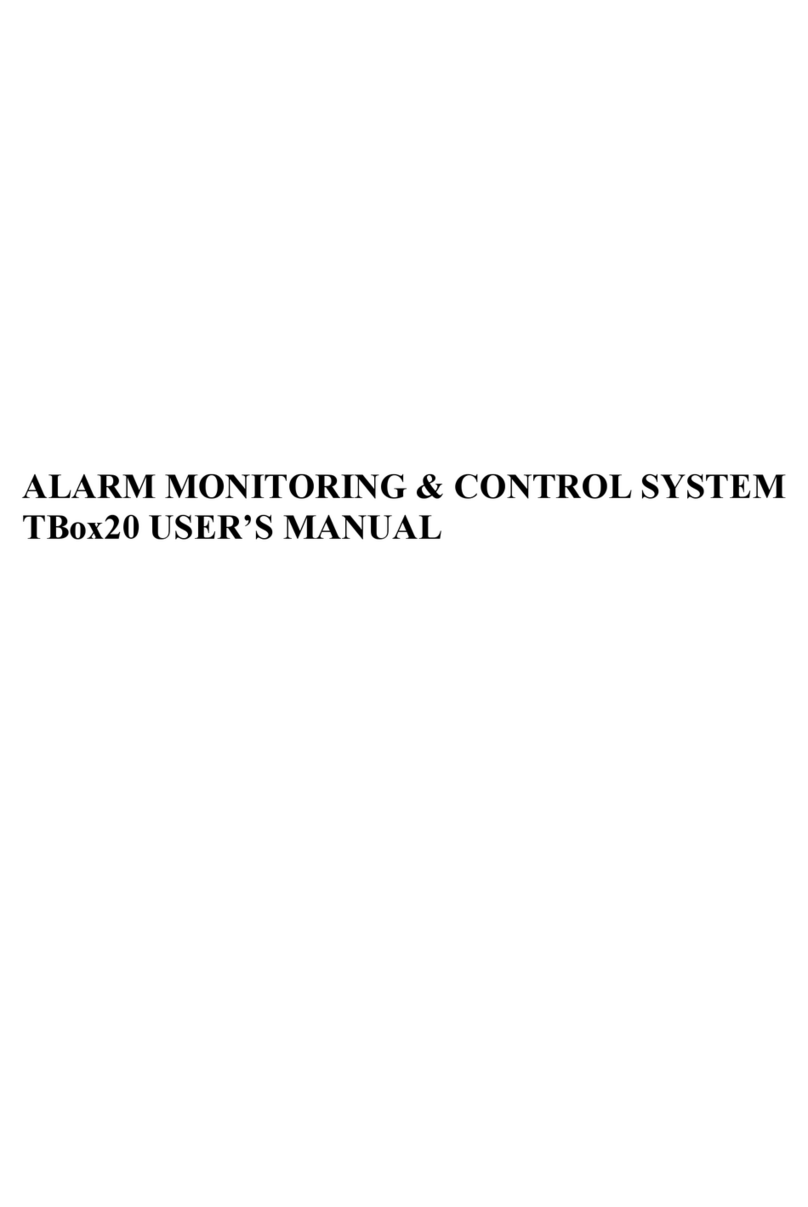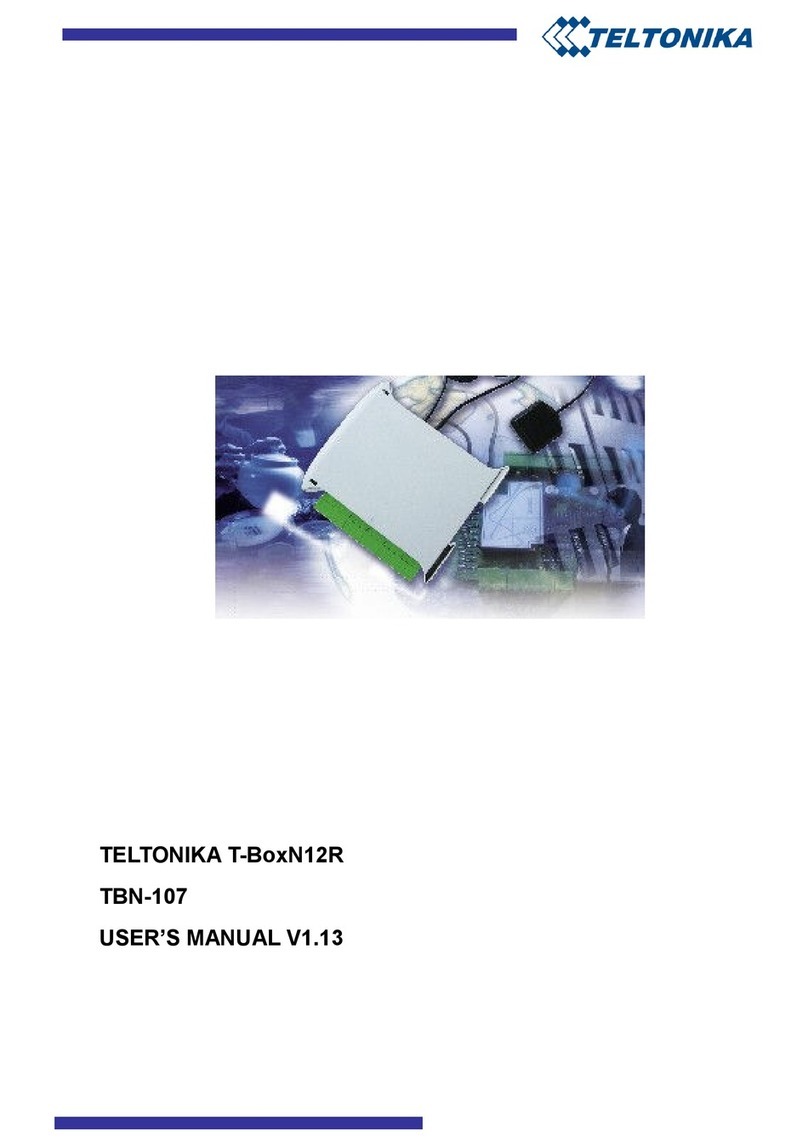
4
When the Power is supplied, the device checks the whole internal data base of nu bers
and operation of the e ory chip.
If there is a e ory error, the device would not switch to operation ode and 2 pulses
would be e itted by alternately by the light diode Signal Strength.
If the GSM ode is not functioning, the device would not switch to operation ode
and uninterrupted swift short pulses would be e itted by the light diode Signal Strength.
In the device, the whole internal data base of nu bers is being checked by checking
the control counting (CRC). If the control counting does not atch, the device would rewrite
all settings back to anufacturer’s values:
• The setting of switching off the signal is replaced by “switching off on receiving an
external signal”.
• The ti e for switching off the relay is set at 5 sec. However, it is not being used.
• The data base of nu bers is deleted.
When the device is operating, it is possible to connect a personal co puter and do the
configuration. In addition, when data is being trans itted fro the device to the personal
co puter and vice versa, it does not respond to calls and SMS essages.
M A K I N G T H E D E V I C E R E A D Y F O R W O R K
After purchasing the device it needs to be configured, i. e. the list of nu bers which the
device would respond to ust be recorded in the e ory as well as the para eters of the
switching-on signal of the operating device.
When the device is switched on for the first ti e, its data base of nu bers is e pty.
The device ust be configured by a personal co puter and a progra e since the
configuration co and by SMS essages ay be received only fro nu bers which are
already available in the data base.
The device is fixed onto DIN board and connected as shown in the labelling on the
body.
Before using the device, insert a SIM card with an unlocked PIN code check. PIN code
check ay be unlocked by any obile phone or other appropriate device. For ore
co prehensive infor ation, please refer to the internet service provider, the owner of the
SIM card.
Picture 3. Inserting SIM card
Note: The configuration can be done after the device is bought or at a later stage, when
the device has been prepared for use.
Note: the SIM card ay only be inserted while the power supply of the device is
unplugged.





























